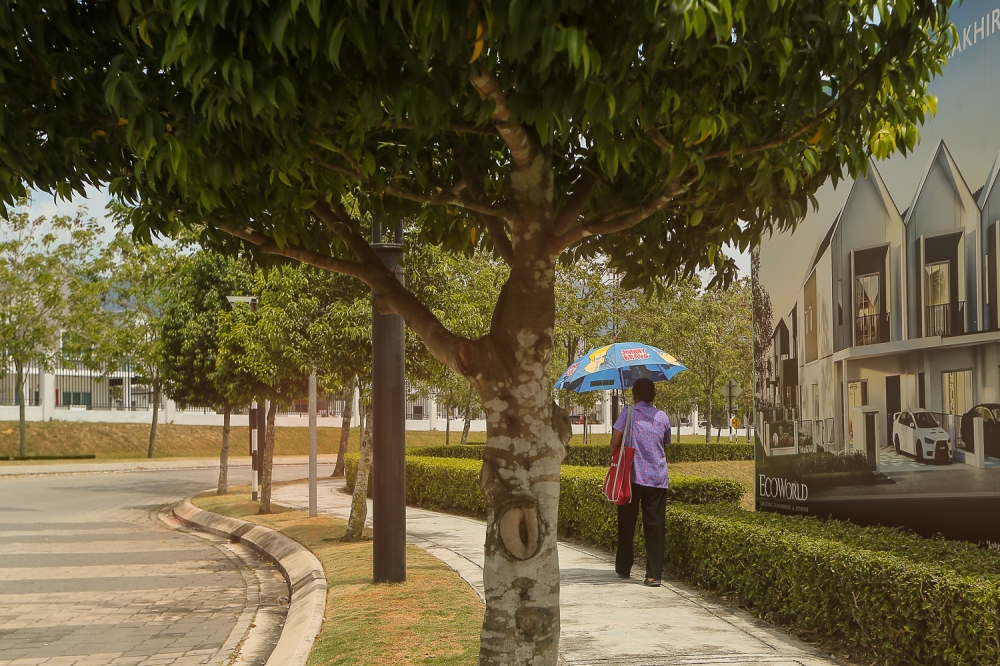KUALA LUMPUR, June 20 — Trees in cities are more than just decorative elements.
They play a critical role in mitigating heat gain from hard surfaces by providing shade and releasing cool air through evapotranspiration, natural processes that make urban centres more liveable.
However, the wrong tree species can pose challenges.
Some can be invasive, prone to diseases, or have roots that damage pavements or roads.
Trees suitable for a city like Chiang Mai, Thailand, may not be ideal for Johor Baru or Putrajaya, even if both countries share a similar climate.
“When planners began conceptualising how cities and towns in Malaysia would look, trees were seen mostly for their aesthetic value,” said Dr Sreetheran Maruthaveeran, a certified arborist and senior lecturer in Landscape Architecture at Universiti Putra Malaysia (UPM).
The realisation that trees are vital buffers against climate warming and essential for urban survivability came later.
Sreetheran said planners must now consider factors such as carbon storage and sequestration when selecting tree species, alongside low maintenance requirements.
Malay Mail spoke to two tree experts to identify species they believe are ideal for cities like Kuala Lumpur and Johor Baru.

Angsana or Sena (Pterocarpus indicus)
The Angsana’s distinctive dome-shaped crown offers excellent shade and is visually appealing, making it a popular choice for urban landscaping.
Known for its hard, durable, and termite-resistant wood, the tree also has nitrogen-fixing capabilities.
“Angsana trees have shown the ability to sequester significant amounts of carbon annually,” Sreetheran said.
Pulai Pipit, Pulai Penipu Paya or Akar Lumut (Alstonia angustifolia)
Commonly known as Pulai in Malaysia, this tree can grow up to 40 metres tall with a trunk diameter of up to 60 centimetres, making it excellent for shading and cooling urban areas.
Pulai trees also produce white, yellow, or cream-coloured flowers that attract pollinators like butterflies and hummingbirds, enriching urban biodiversity.
Additionally, its leaves and roots have antifungal and anti-inflammatory properties, making the tree cost-effective to maintain.
Dr Ruzana Adibah Mohd Sanusi, laboratory head at UPM’s Institute of Tropical Forestry and Agroforestry, said tree selection should consider how species interact with other plants and fit into the ecosystem.
“The tree we choose should be suitable for the site, particularly how they interact (with other organisms) at the site,” she said.

Jambu Laut or Jambu Air Laut (Syzygium grande)
Known as the Sea Apple Tree in English, the Jambu Laut is prized for its attractive foliage and fragrant flowers.
It also bears edible, plum-sized fruits that attract birds, butterflies, and other wildlife, providing food and shelter and enhancing the ecosystem.
Mature Jambu Laut trees, which can grow up to 45 metres tall, are fire-tolerant and have been used in firebreaks.
These trees are fast-growing and thrive in humid, coastal areas, making them well-suited for city forestry.
Mempari (Pongamia pinnata)
Native to South-east Asia, including Malaysia, the Mempari tree thrives in diverse habitats, from riverbanks and tidal estuaries to lowland forests.
The tree is highly tolerant of various climates, soils, and even some shade, making it ideal for urban areas.
Its ability to fix nitrogen in the soil helps restore degraded or contaminated land and mitigates soil erosion, protecting infrastructure.
However, pongamia trees can grow quite large, requiring proper spacing and regular maintenance to prevent overcrowding and ensure their health.



















